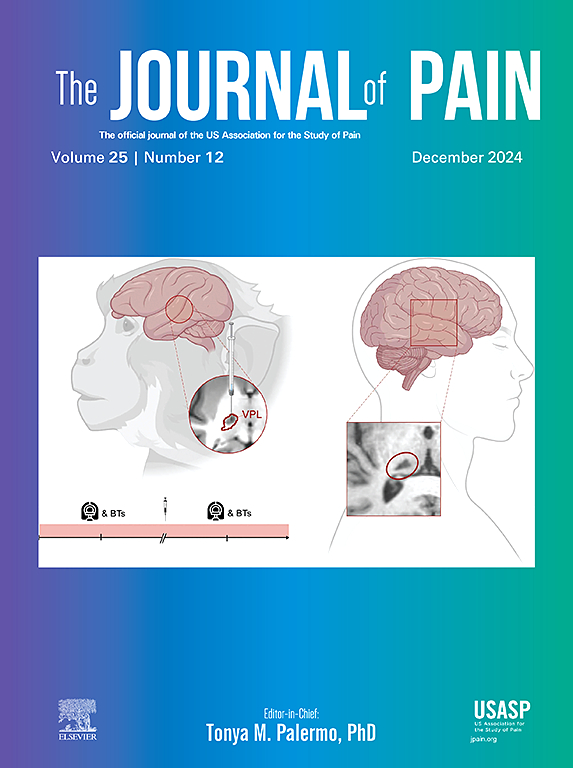Using intensive longitudinal assessment to study mechanisms of the Native American pain inequity among persons experiencing depression and/or anxiety: The role of interpersonal discrimination and stress
IF 4
2区 医学
Q1 CLINICAL NEUROLOGY
引用次数: 0
Abstract
Native Americans (NA) experience higher rates of chronic pain than other U.S. racial/ethnic groups. Our research has indicated discrimination and stress play a role in chronic pain onset. However, chronic pain research has mostly relied on retrospective reports that may be impacted by recall bias. The current study was a secondary analysis of data from 208 NA, 206 Black, 202 Latinx, and 206 non-Hispanic White (NHW) participants from an efficacy trial of a mobile health intervention for depression and anxiety. Participants were prompted to complete 6 months of twice daily ecological momentary assessments (EMAs) that included stress and pain. Discrimination was assessed at baseline. Pain EMAs were used to reduce recall bias and estimate chronic pain prevalence. Dynamic structural equation modeling assessed the impact of race/ethnicity and discrimination on stress-pain relationships, as well as pain and stress dynamics. To assess chronic pain (pain ≥3-months), participants had to complete ≥3-months of consecutive EMAs, leaving 578 participants available for primary analyses (there were no racial/ethnic differences in EMA completion). Results showed NAs had the highest rate of chronic pain that was statistically significantly higher than NHW and Black participants. Controlling discrimination eliminated the NA-NHW, but not the NA-Black, pain inequity. Moreover, a reciprocal stress-pain relationship was found and was stronger in NAs than other groups. Discrimination did not exacerbate stress-pain relationships but was associated with higher rates of chronic pain and greater pain fluctuations, regardless of race/ethnicity. These findings indicate that targeting stress and discrimination could help reduce the NA pain inequity.
Perspective
Native Americans experienced a self-reinforcing stress-pain cycle in which stress predicted future pain and pain predicted future stress. This cycle was stronger than Black, Latinx, and non-Hispanic White groups. Discrimination was associated with chronic pain but not stronger stress-pain relationships. These findings have implications for treatment.
求助全文
约1分钟内获得全文
求助全文
来源期刊

Journal of Pain
医学-临床神经学
CiteScore
6.30
自引率
7.50%
发文量
441
审稿时长
42 days
期刊介绍:
The Journal of Pain publishes original articles related to all aspects of pain, including clinical and basic research, patient care, education, and health policy. Articles selected for publication in the Journal are most commonly reports of original clinical research or reports of original basic research. In addition, invited critical reviews, including meta analyses of drugs for pain management, invited commentaries on reviews, and exceptional case studies are published in the Journal. The mission of the Journal is to improve the care of patients in pain by providing a forum for clinical researchers, basic scientists, clinicians, and other health professionals to publish original research.
 求助内容:
求助内容: 应助结果提醒方式:
应助结果提醒方式:


